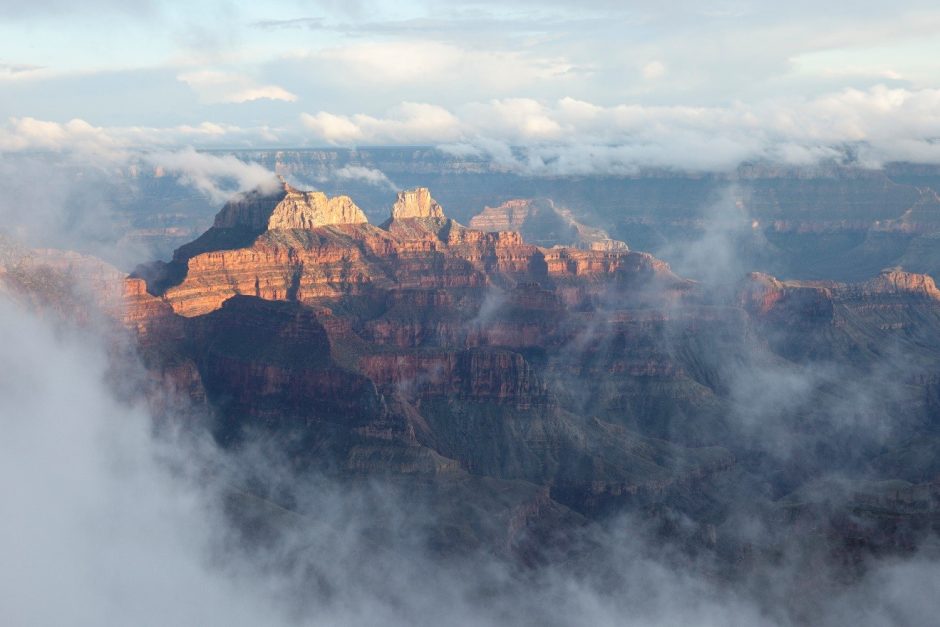
Tips on Photographing the Grand Canyon
When it comes to Canyon Country, the Grand Canyon stands alone. While there are many other iconic desert landscapes within short drives from both the North and South rims of the Grand Canyon, it certainly gets the most attention.
Follow these tricks and tips to help you capture one of America’s greatest natural treasures.
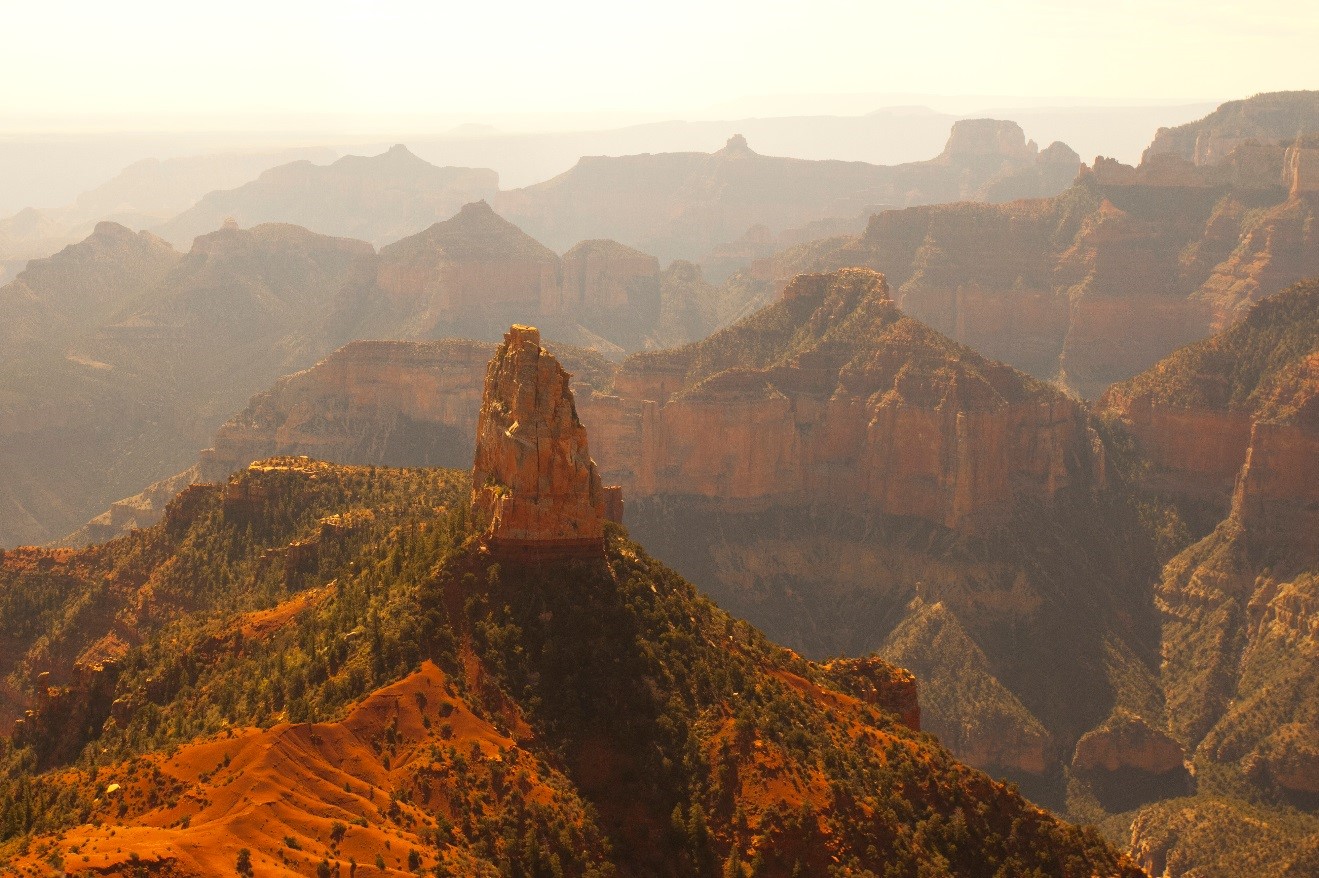
Zero in on Specific Features
Perhaps the first thing you’ll realize when going to photograph the Grand Canyon is that it’s difficult to capture the sense of scale and its magnitude. At 11 miles across from the viewpoint at the North Rim Lodge, it’s difficult to do it justice.
Rather than trying to show how impressive the Grand Canyon is by photographing the whole thing, from rim to rim, instead zero in on smaller portions. Like in the above photo at Point Imperial, I chose to capture only a small snippet of the entire view. However, when looking at the photo, you still get the feeling of enormity, size, scale, grandeur, etc. If I were to have zoomed out, and all those buttes, temples, walls, and spires would be that much smaller, effectively diminishing the grandeur of the canyon itself. It’s somewhat counter intuitive, but trust me…sometimes less is more.
To do so, have your zoom telephoto handy so that you aren’t restricted to only wide angle shots.
Get the Right Light
There’s a lot of weather that goes on in the various canyons of the southwest, which is great for photographers. While earlier and later in the day tend to provide the softest light, an approaching afternoon storm or mid-day fog can really be helpful.
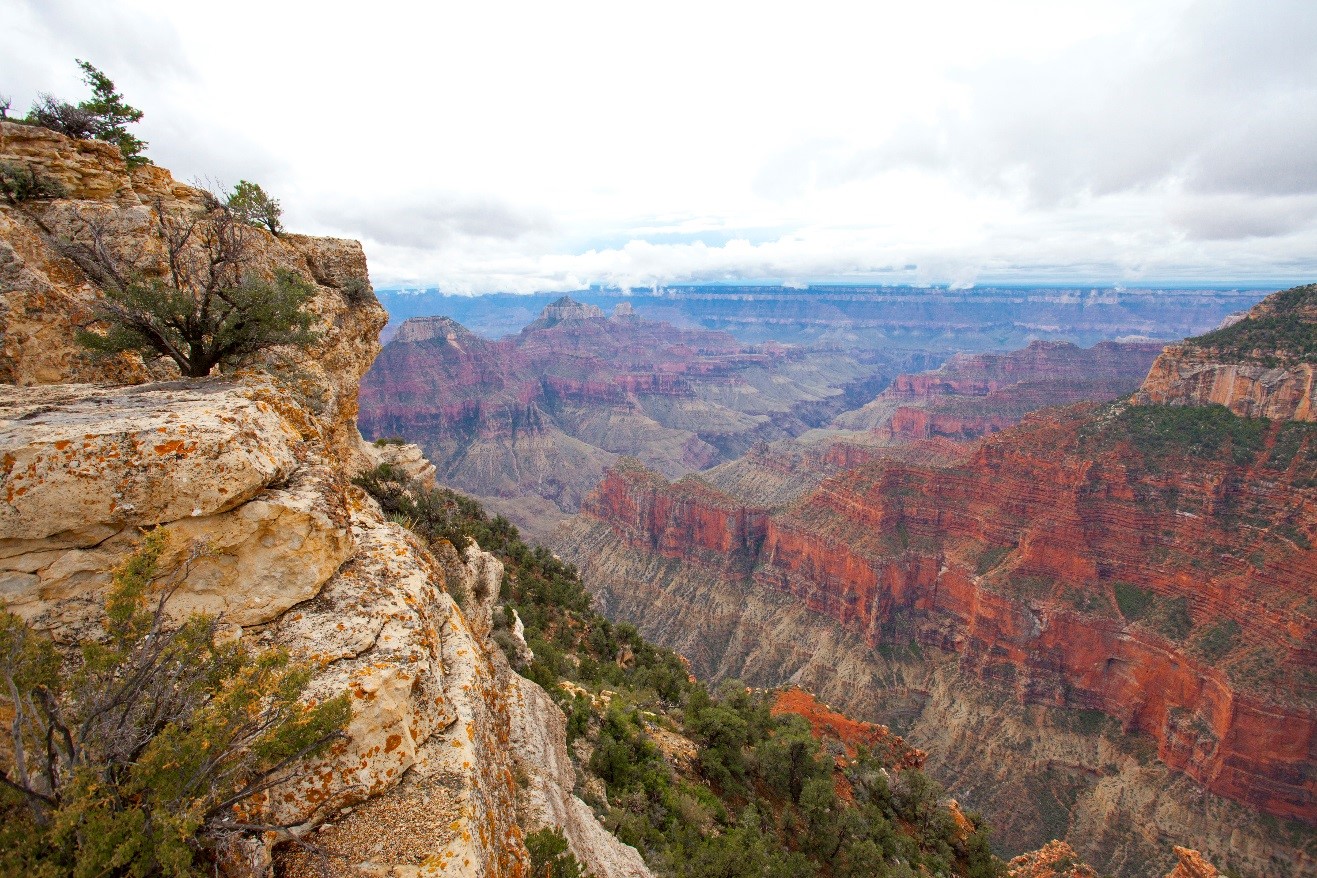
Harness that unique light to provide nice and even lighting, which is so integral in making the dramatic colors of the canyon walls pop.
Think About Contrast
Contrast is a mixed bag with photography. In the above section, I’m touting the merits of lack of contrast, with the nice even lighting that clouds can provide. However, there is still something to be said about intentional contrast in your photos, especially in canyon country.
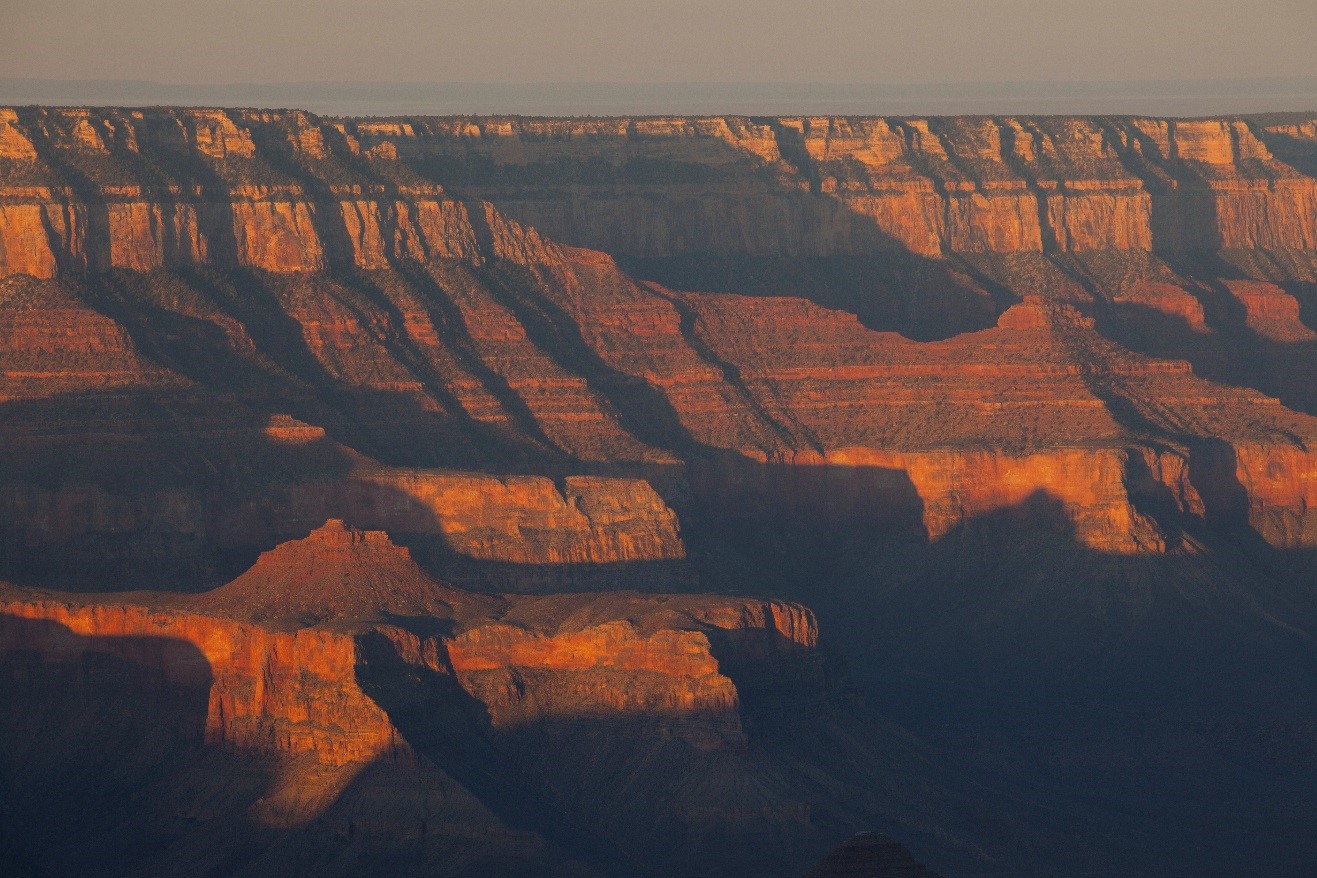
Because shadows are often unavoidable, what with the intense, overhead desert sun, make the most of it. Emphasize the shadows and create a really neat high-contrast photo. As you can see from the above shot, you may need to integrate other techniques (like zeroing in on only part of the canyon) to make the shot impressionable.
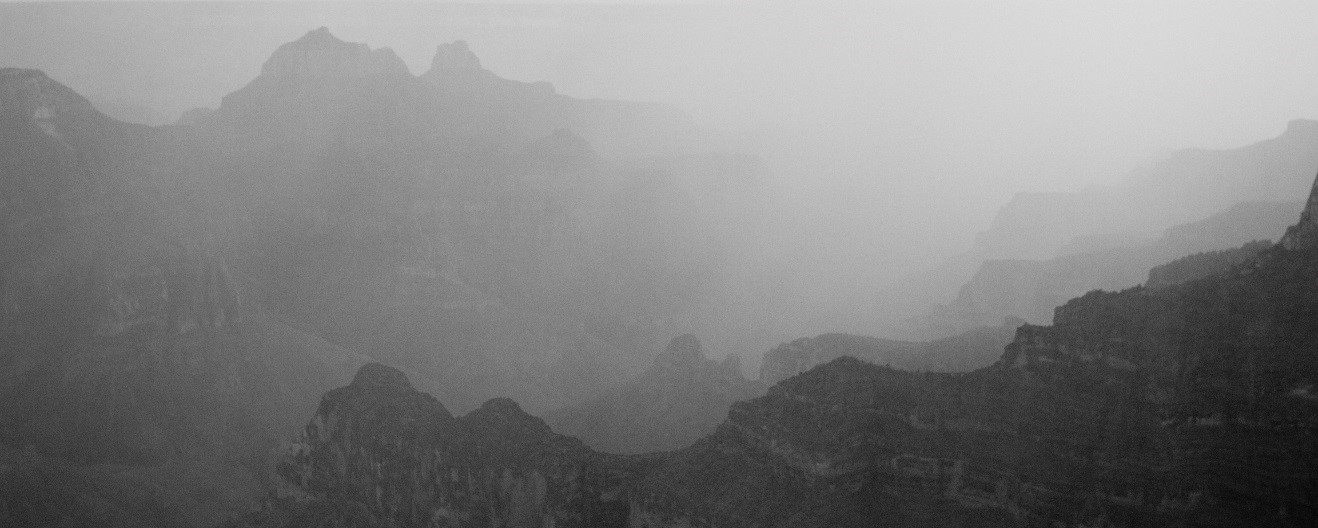
Sometimes thinking in black & white can help when taking photos with high-contrast. When you have diffuse gradients with clear light and dark, like the above photo, you can create a really evocative shot out of pretty much nothing.
Create a Sense of Scale
While zooming in helps with this, like I mention in my first tip, you can also create scale by having people in your shot.
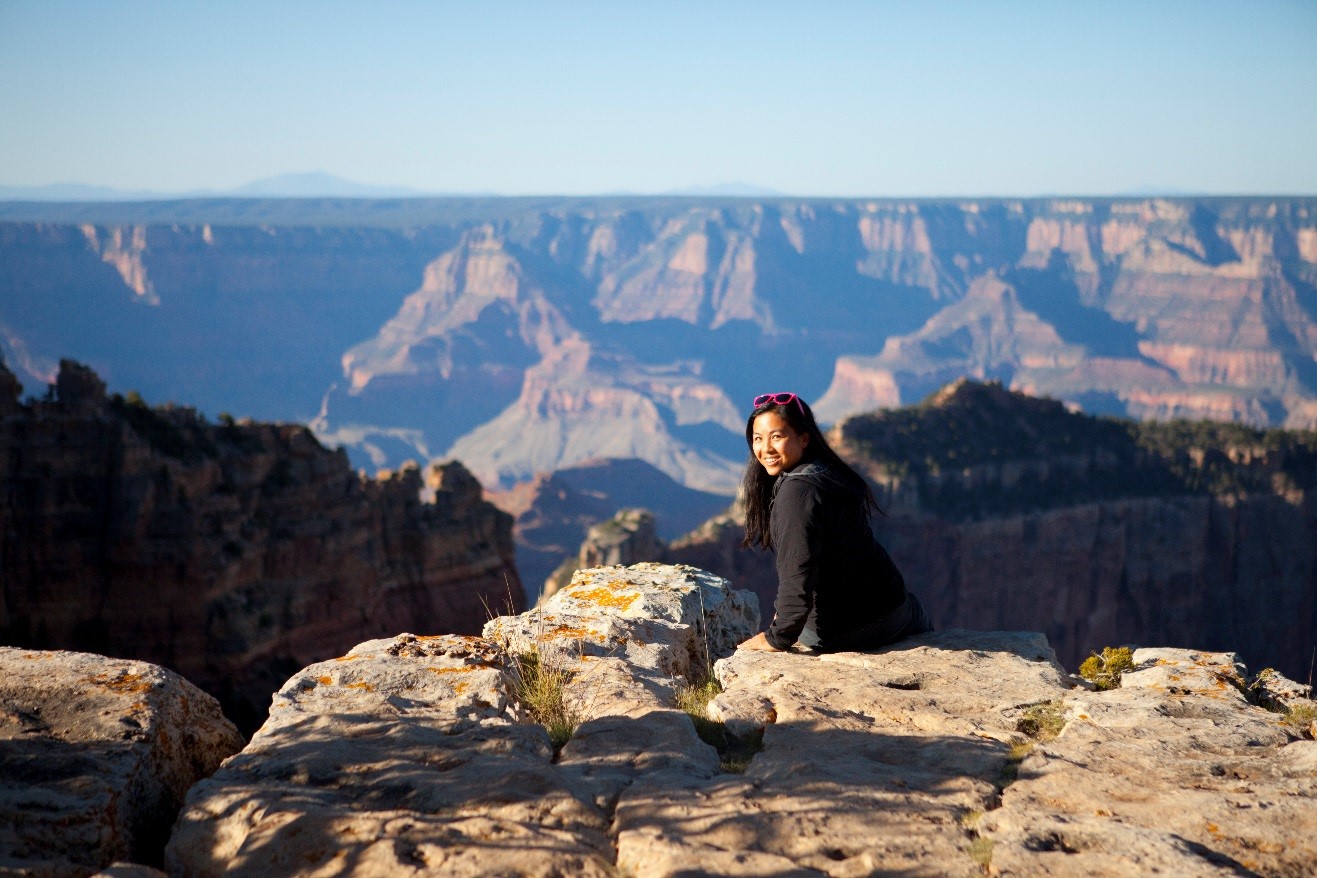
Rocks are somewhat difficult to use when trying to show scale, as they can be misleadingly large or small. By photographing a person on the rock, it certainly helps to provide some context.
The Grand Canyon is certainly the mother of all canyons, and is no doubt quite photogenic, too! When planning your next photo adventure in Canyon Country, don’t miss it, and think about these tips to help you get a wide array of show stopping Grand Canyon photographs.
Enjoy!
-Court
Leave a reply